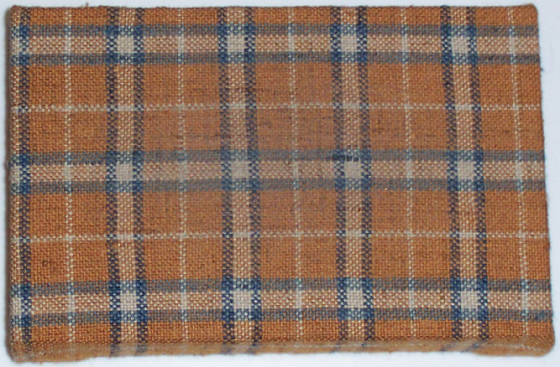|

As a mid-nineteenth century
term may mean:
a. All handspun and hand woven
b. Factory spun warp, handspun filler, hand
woven
c. All factory spun, but hand woven
d. All factory spun and factory woven in the South,
where home=South; supposed to resemble true hand woven
e. Fake homespun—factory spun and woven in the North, considered a cheap imitation.
To determine if
a piece of fabric is handwoven, check to see if there is variation of thread count at various places on the cloth; if it is
a plaid or strip, fold the fabric to see if the spacing is exactly consistent; cloth is usually not perfectly rectangular;
usually has no selvedge or less than ¼" and it is the same as the rest of the cloth; usually single ply, not two-ply
up through mid 19th century except for blankets or coverlets. Synthetic dyes "run"—natural dyes never
run (except perhaps if a mouse urinates on indigo cloth) but may fade, eat out, or change colors (information from Rabbit
Goody's "Identifying Historic Textiles" course).
From Vicki Betts Textile-Related Definitions webpage http://www.uttyler.edu/vbetts/homespun_def.htm
For additional information on homespun,
visit Vicki Betts' web page on homespun. Also visit her page on the Furr Homespun Dress for detailed images of a homespun dress.
|

